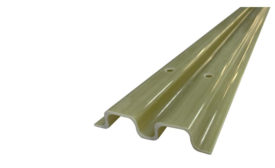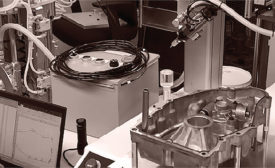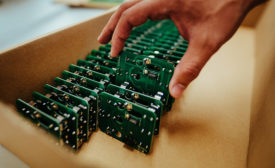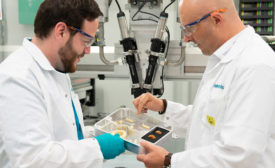Featured on Home Page
When combined with structural adhesives or overmolded thermoplastics, composite putrusion systems* help deliver high-strength, lightweight macrostructures that can help automotive manufacturers meet efficiency goals while optimizing costs.
Read More
Process Design Decisions for Successful Form-in-Place Gasket Sealing
Innovations in automotive design have led to substantial changes in how form-in-place gaskets (FIPGs) are used today.
August 15, 2022
2022 Raw Materials and Chemicals Overview
As COVID recovery continues, manufacturers must strategize and optimize to mitigate ongoing supply chain issues and soaring costs.
August 8, 2022
Post-Cure Advantages for Silicone Elastomers and Adhesives
Whether using a silicone adhesive in an aerospace assembly or manufacturing silicone bakeware, post-cure for silicone is not a process that belongs in the past.
August 5, 2022
Designed Polymer Particle Architectures for Waterborne Acrylic Pressure-Sensitive Adhesives
This paper received the 2022 Carl Dahlquist Award at the Pressure Sensitive Tape Council’s 2022 Tape Week.
Joseph B. Binder
Graham Abramo
William DenBleyker
Melinda Einsla
Catheryn Jackson
Alan Nakatani
Saswati Pujari
August 3, 2022
Supply Chain Strategies
Regaining Control of Your Supply Chain
What is S&OP, and how can it help companies in the adhesives and sealants industry align their end-to-end supply chain?
July 21, 2022
Sustainable Cleaning in Electronics Production
It is critical to sustainably remove all manufacturing contaminants during printed circuit board assembly to ensure the proper adhesion of conformal coatings.
July 19, 2022
Taking a Resin Dispensing Process from Prototyping to Commercialization
Flexibility is needed in every step of a new adhesive or sealant product’s life cycle—from conceptualization to commercialization.
July 14, 2022
Striving for Sustainability
Developing Sustainability in the Packaging of Adhesives and Sealants
A supplier of packaging technologies for adhesive and sealant manufacturers is integrating sustainability into its product development process.
July 12, 2022
Keep the info flowing with our eNewsletters!
Get the latest industry updates tailored your way.
JOIN TODAY!Copyright ©2024. All Rights Reserved BNP Media.
Design, CMS, Hosting & Web Development :: ePublishing











